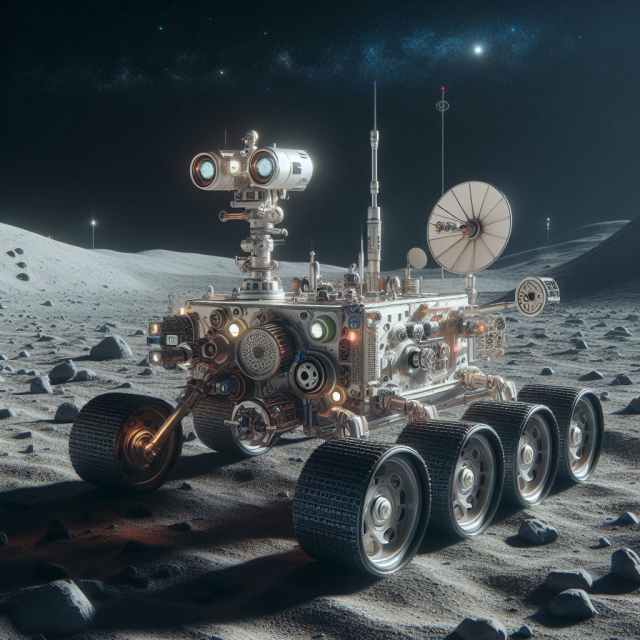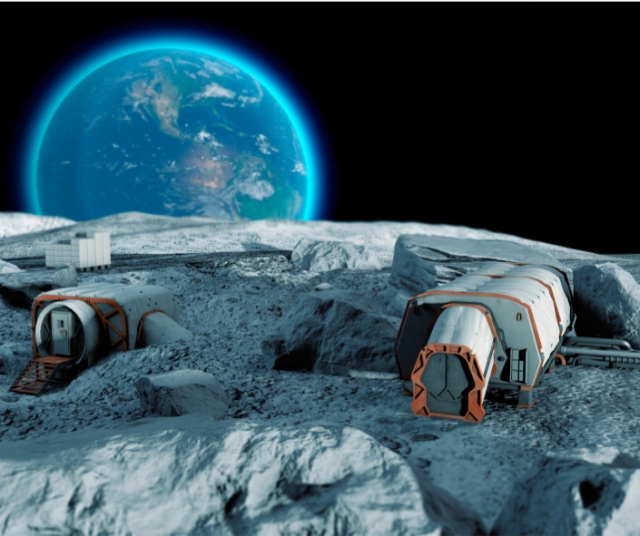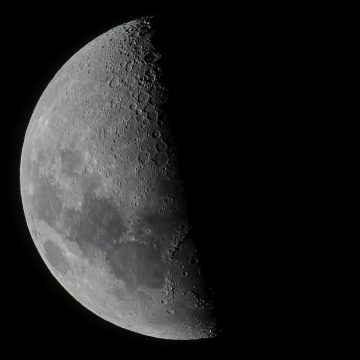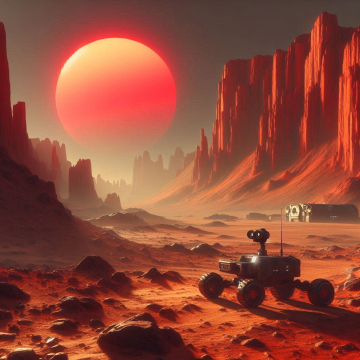The Moon, our celestial nocturnal companion, has been an object of fascination and exploration throughout history. From the first naked-eye observations to complex space missions, the Moon has played a crucial role in our understanding of the cosmos. Join us as we immerse ourselves in the exciting world of lunar missions, exploring the milestones, discoveries and challenges that have marked the trajectory of lunar exploration over the years.
The First Steps: Pioneering Lunar Exploration.
Preliminary Exploration:
Lunar exploration began long before manned space missions. Ancient astronomers, such as Galileo Galilei, observed the Moon through ancient telescopes, revealing lunar mountains, craters, and seas. These observations laid the foundation for future missions.
We can also do these studies or views of the moon from home, using some conventional telescope, even without using one of these we can appreciate some seas of the moon, which we will see as spots that are on it.
Early Lunar Programs:
In the space age, the first automated missions focused on reaching the Moon. The Soviet Union successfully launched the Luna 2 probe in 1959, becoming the first human object to impact the surface of the Moon. Additional missions followed, such as Luna 9, which managed to transmit the first images of the lunar surface in 1966.
The Space Race:
Apollo Project:
In the 1960s, the Space Race took place, starring the United States and the Soviet Union competing for the lunar conquest, who would be the first to put a man on the moon. NASA's Apollo Program was the American response to the Soviet initiative, culminating with the historic Apollo 11 mission in 1969, when astronauts Neil Armstrong and Buzz Aldrin became the first humans to walk on the Moon.
Later Apollo Missions:
The Apollo Program did not stop with the Apollo 11 mission. Subsequent missions, such as Apollo 12, 14, 15, 16 and 17, continued to explore the Moon, conducting scientific experiments, collecting samples and expanding our knowledge of lunar geology. .
Robotic Exploration.

Probes and Rovers:
After the Apollo missions, lunar exploration focused on robotic probes and rovers in order to explore every space on the lunar surface. The Moon has been the destination of several missions, including the Clementine probe in 1994 and the Lunar Reconnaissance Orbiter (LRO) mission in 2009, which has mapped the lunar surface in detail.
International Exploration:
The Moon has become a target for various space agencies. China launched the Chang'e-1 probe in 2007 and has continued with subsequent missions, including the Chang'e-3 mission, which deployed a lunar rover in 2013. Other countries, such as India with the Chandrayaan-2 mission, have also contributed to lunar exploration. They all work with the same goal, to investigate and collect information to advance science and acquire more knowledge about that small part of the cosmos.
Future Missions: Returning to the Moon
Artemis Program:
NASA has announced the Artemis Program, which aims to land the first woman and next man on the Moon by 2024. This ambitious project seeks to establish a sustainable presence on the Moon and lay the foundation for manned missions to Mars in the future. .
International Collaboration:
Current lunar exploration involves international collaboration. The Gateway lunar space station, a planned orbital platform, will serve as a launching point for future lunar missions, with contributions from space agencies around the world.
Challenges and Achievements of Lunar Exploration
Technical Challenges:
Lunar exploration has faced numerous technical challenges, from precise navigation to adapting to extreme lunar conditions. Space engineering has had to evolve to overcome these obstacles, improvements have had to be made to all the tools used by astronauts and of course, also create new ones to be able to carry out better research.
Scientific advances:
Each lunar mission has provided valuable data for understanding the Moon and, by extension, the history of the solar system. Discoveries about the composition of the Moon, the presence of water and the formation of craters have contributed to scientific knowledge.
Cultural and Scientific Impact.
Lunar exploration has left an indelible mark on popular culture. From John F. Kennedy's famous speech to films like "Apollo 13" and "First Man," the Moon remains a symbol of human exploration and achievement.
Technological Developments:
The quest to reach the Moon has driven the development of innovative technologies. Many technological advances initially designed for lunar missions have found applications in everyday life, from medical devices to advanced materials, any possible instrument is required to do the job.
As we review the history of lunar missions, it becomes clear that our explorations of the Moon are far from over. With planned missions, emerging technologies and increasing international collaboration, the future of lunar exploration looks exciting and full of possibilities. The Moon, once an enigma in the night sky, is now revealed as a silent witness to human tenacity and ingenuity in the quest to understand the vast universe we inhabit.






